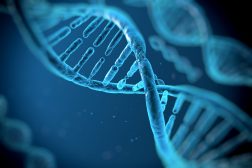Definition
noun
An amino sugar derivative of glucose, with a chemical formula of C8H15NO6, and serves as a major component of diverse biological structures, such as bacterial cell wall and peptidoglycan, chitin of insects and crustaceans, radulas of mollusks, beaks of cephalopods, and fungal cell walls
Supplement
N-Acetylglucosamine is an amino sugar that is derived from glucose. It has a molar mass of 221.21 g/mol. It has a chemical formula of C8H15NO6. It is an amide between glucosamine and acetic acid.
N-Acetylglucosamine is naturally predominant as it occurs in various biological structures. It is one of the most abundant carbohydrates. For instance, it is an important component of the cell wall of bacteria and certain fungi. It is also the monomer constituent of chitin, which is the outer covering (exoskeleton) of certain insects. It is also present in the shells of crustaceans. In mollusks, it is part of the radula, i.e. the toothed, chitinous ribbon, used by mollusks for feeding. It is also one of the major components of the beaks of cephalopods. It also forms glycosaminoglycans and glycolipids, as well as glycoproteins in biological membranes.
IUPAC name:
- β-D-(Acetylamino)-2-deoxy-glucopyranose
Chemical formula:
Abbreviation:
- GlcNAc
- NAG
Also called:
See also:
- chitin
- glycosaminoglycan
- glycolipid
- glycoprotein
- glucosamine







